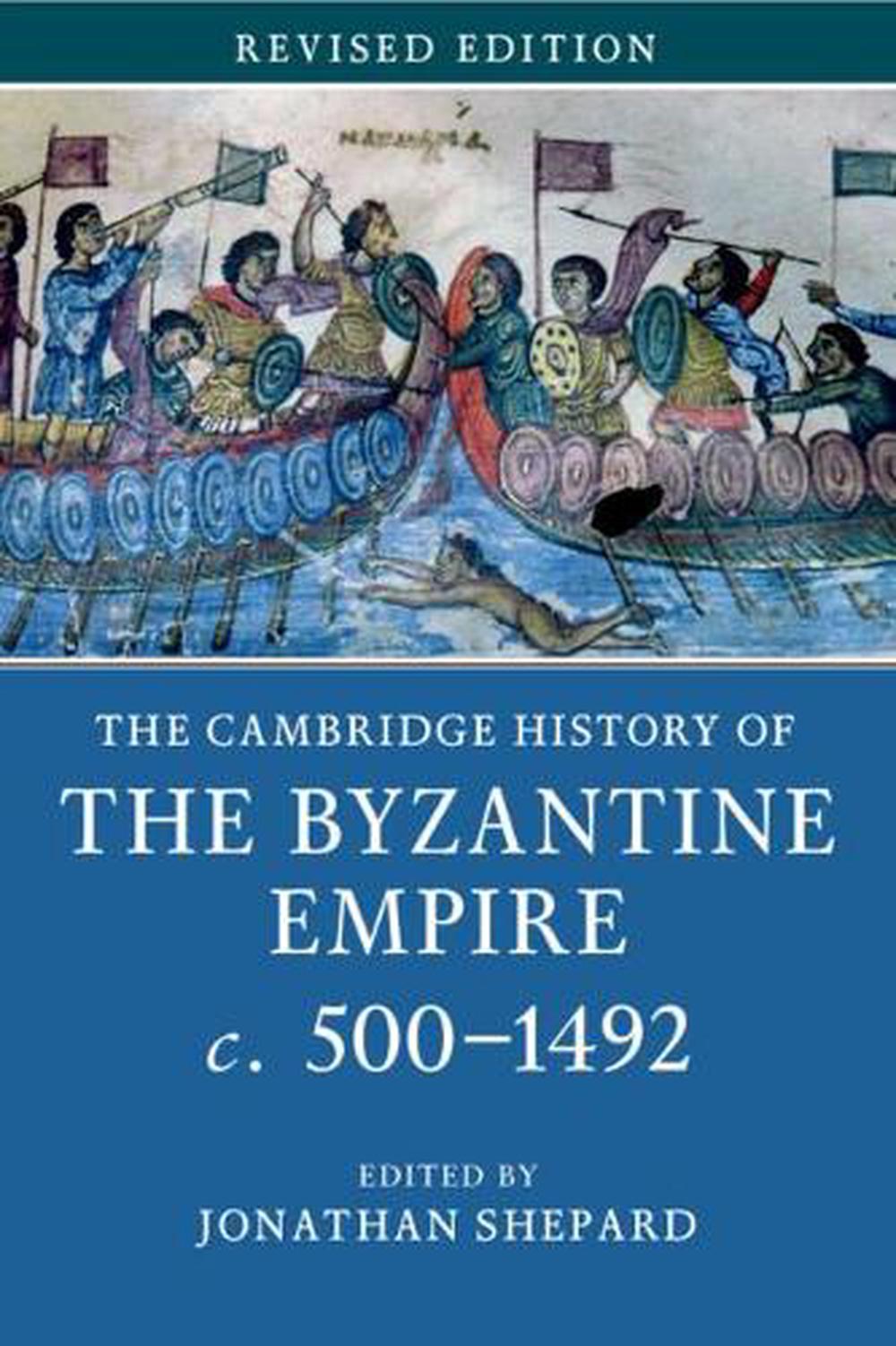
The Cambridge History of the Byzantine Empire c.5001492
by Jonathan Shepard
Byzantium lasted a thousand years, ruled by self-styled 'emperors of the Romans'. It underwent territorial and structural changes, yet recovered repeatedly from disaster. This book tells the story, tracing political and military events, religious controversy and economic change, with particular attention to relations with the outside world.
Paperback
English
Brand New
Publisher Description
Byzantium lasted a thousand years, ruled to the end by self-styled 'emperors of the Romans'. It underwent kaleidoscopic territorial and structural changes, yet recovered repeatedly from disaster: even after the near-impregnable Constantinople fell in 1204, variant forms of the empire reconstituted themselves. The Cambridge History of the Byzantine Empire c.500–1492 tells the story, tracing political and military events, religious controversies and economic change. It offers clear, authoritative chapters on the main events and periods, with more detailed chapters on outlying regions and neighbouring societies and powers of Byzantium. With aids such as maps, a glossary, an alternative place-name table and references to English translations of sources, it will be valuable as an introduction. However, it also offers stimulating new approaches and important findings, making it essential reading for postgraduates and for specialists. The revised paperback edition contains a new preface by the editor and will offer an invaluable companion to survey courses in Byzantine history.
Author Biography
Jonathan Shepard was a University Lecturer in History at the University of Cambridge. Co-author of The Emergence of Rus (1996) with Simon Franklin, with whom he also co-edited Byzantine Diplomacy (1992), some of his many articles appear in Emergent Elites and Byzantium (2011). Edited volumes include The Expansion of Orthodox Europe (2007), Byzantium and the Viking World (with Fedir Androshchuk and Monica White, 2016), Imperial Spheres and the Adriatic (with Mladen Ani and Trpimir Vedriš, 2017), and Viking-Age Trade (with Jacek Gruszczyski and Marek Jankowiak, 2019), and forthcoming volumes include Muslims on the Volga (with Luke Treadwell) and Political Culture in Three Spheres: Byzantium, Islam and the West (with Catherine Holmes et al.).
Table of Contents
General introduction Jonathan Shepard; Part I. The Earlier Empire (c.500–c.700): 1. Justinian and his legacy (500–600) Andrew Louth; 2. Eastern neighbours; 2.1. Persia and the Sasanian monarchy (224–651) Zeev Rubin; 2.2. Armenia (400–600) R. W. Thomson; 2.3. The Arabs to the time of the Prophet Lawrence I. Conrad; 3. Western approaches (500–600) John Moorhead; 4. Byzantium transforming (600–700) Andrew Louth; Part II. The Middle Empire (c.700–1204): 5. State of emergency (700–850) Marie-France Auzépy; 6. After iconoclasm (850–886) Shaun Tougher; 7. Religious missions Sergey A. Ivanov; 8. Armenian neighbours (600–1045) T. W. Greenwood; 9. Confronting Islam: emperors versus caliphs (641–c.850) Walter E. Kaegi; 10. Western approaches (700–900) Michael McCormick; 11. Byzantine Italy (680–876) Thomas S. Brown; 12. The middle Byzantine economy (600–1204) Mark Whittow; 13. Equilibrium to expansion (886–1025) Jonathan Shepard; 14. Western approaches (900–1025) Jonathan Shepard; 15. Byzantium and southern Italy (876–1000) G. A. Loud; 16. Belle époque or crisis? (1025–1118) Michael Angold; 17. The empire of the Komnenoi (1118–1204) Paul Magdalino; 18. Balkan borderlands (1018–1204) Paul Stephenson; 19. Raiders and neighbours: the Turks (1040–1304) D. A. Korobeinikov; Part III. The Byzantine Lands in the Later Middle Ages (1204–1492): 20. After the Fourth Crusade: 20.1. The Greek rump states and the recovery of Byzantium Michael Angold; 20.2. The Latin empire of Constantinople and the Frankish states David Jacoby; 21. Balkans powers: Albania, Serbia and Bulgaria (1200–1300) Alain Ducellier; 22. The Palaiologoi and the world around them (1261–1400) Angeliki E. Laiou; 23. Latins in the Aegean and the Balkans (1300–1400) Michel Balard; 24. The Roman orthodox world (1393–1492) Anthony Bryer.
Review
-A fine scholarly accomplishment. The editor's long introduction sets the stage for the contributions that follow. The volume is separated into four segments: the notion of Byzantium, periodization, an ap[preciation of cultural and societal approaches to Byzantium, and a discussion of sources in translation. The book's three parts correspond to the apex, transformation, and fall of the Byzantine Empire....The book has a fine bibliography, illustrations, and map selection. Recommended.-
--Choice
"A fine scholarly accomplishment. The editor's long introduction sets the stage for the contributions that follow. The volume is separated into four segments: the notion of Byzantium, periodization, an ap[preciation of cultural and societal approaches to Byzantium, and a discussion of sources in translation. The book's three parts correspond to the apex, transformation, and fall of the Byzantine Empire....The book has a fine bibliography, illustrations, and map selection. Recommended."
--Choice
Promotional
The only single-volume on the 1000-year Byzantine Empire, written by experts in the different periods, which blends narrative and thematic history.
Promotional "Headline"
The only single-volume on the 1000-year Byzantine Empire, written by experts in the different periods, which blends narrative and thematic history.
Description for Bookstore
Byzantium lasted a thousand years, ruled by self-styled 'emperors of the Romans'. It underwent territorial and structural changes, yet recovered repeatedly from disaster. This book tells the story, tracing political and military events, religious controversy and economic change, with particular attention to relations with the outside world.
Description for Library
Byzantium lasted a thousand years, ruled by self-styled 'emperors of the Romans'. It underwent territorial and structural changes, yet recovered repeatedly from disaster. This book tells the story, tracing political and military events, religious controversy and economic change, with particular attention to relations with the outside world.
Details

